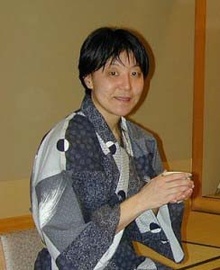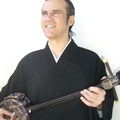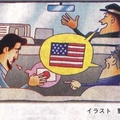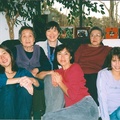“Hey, what are you doing over there with the Hapa?”
Kathy and I looked over and there were three of our Japanese American friends at another table smiling at us, one with a mischievous grin. Sandy had jokingly pointed out that I was a mixed blood amidst a group of full bloods. Kathy and I smiled back at them and returned to our conversation.
But Kathy suddenly surprised me by saying, “Actually, I’m kind of mixed too; my mother is from Okinawa; like an interracial marriage to Japanese.” I looked over at my friends and remembered that one of them had told me his father was Chinese. Hey, that makes three of us and only two of them!
I recalled this incident when I read yesterday in the New York Times that while Asian Americans still have one of the highest interracial marriage rates in the country, Asian Americans are marrying other Asian Americans more often than in recent years. The article reported that many of these couples are of different ethnicities, such as Chinese-Indian and Filipino-Vietnamese. This means that mixed Asian Americans will continue to increase, and that many of them will not be apparently ethnically mixed. Of course, these individuals exist now and the diversity among any ethnically defined subgroup of Asian Americans is far greater than assumed. Little is known about their experience, and I think they are generally not regarded as Hapa and may not consider themselves to be Hapa. But as for others, such as black Asians, who now feel excluded from Hapa circles, a space to express mixed ancestries may be appreciated. Developing these welcome spaces is a challenge facing Asian American communities.
When I asked my friend Kathy Kaya if she identified with “hapa,” she told me there are two reasons why she has not:
“One is that some multiracial Hapa I have met questioned my “Hapa-ness” because I don’t look mixed-racial, so I have not sought out or associated with Hapa groups. I am happy to hear that many JAs who identify with being Hapa have found ways to be proud of and to celebrate their Hapa identitities and their Japanese heritage. However, I can’t help but wonder how many more people could feel connected with positively identifying as Hapa if there were a more inclusive construction of Hapa identity, rather than what I have experienced as a view that excludes certain groups of people.
I think the other reason why I do not associate myself with a Hapa identity is that it seems to me to perpetuate the dominant view that the only people who can call themselves Japanese or Japanese American are “pure” Japanese. The word hapa itself signifies that you’re “only half.” Interestingly, I have had some JAs tell me that they consider me a JA because I can “pass.” They don’t seem to see how that notion in itself diminishes my Okinawan identity as well as diminishes people of mixed race and/or mixed ethnicity. Why shouldn’t I be able to claim both identities, or just one if that’s who I am?
To be honest I’m so tired of other people attempting to define who I am or who I’m not—I’m not really Hapa and I’m not really Japanese American because I am half Okinawan—or making me feel like I don’t belong. I think it was these experiences that inspired me to create a space in my dissertation research where a diverse group of JAs (specifically Sansei women) could bring their whole selves to the group and feel seen and heard. It’s also why I gravitate more toward the concept of being Nikkei, which I believe includes ANYONE of Japanese ancestry.
With the high rate of sansei and yonsei interracial and interethnic marriages/partnerships, there will be a growing number of JAs who will have multiracial and multiethnic backgrounds. How can we open the circle of inclusion and create welcoming spaces for the multiplicity of JA identities and diverse experiences of future generations rather than maintaining narrow conceptions of what it means to be Japanese American? I think it is important to create spaces where people can connect on that which is common to all as well as connect on the things that diversifies the group and makes individuals unique. While this is a challenging endeavor, I think this can be accomplished without excluding certain groups of people and fostering dominant relations and structures. I know that I have much to learn about my own conditioning to dominant beliefs and values and would welcome a place where I could connect with others and we could learn from one another.”
* This article was originally published on the author’s website on April 6, 2012.
© 2012 Stephen Murphy-Shigematsu






